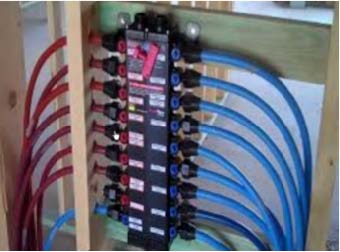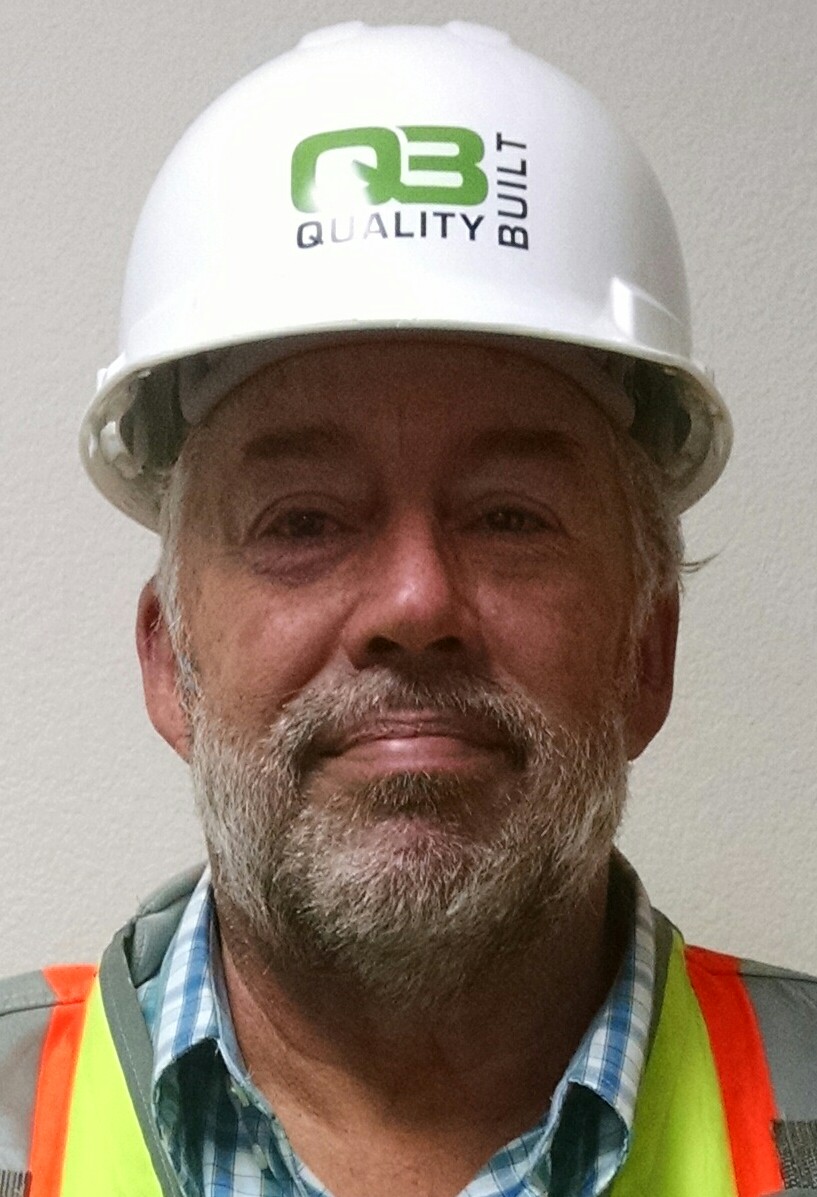Quality Built® Tech Alert
August 3rd, 2015
Volume 2, Issue 10
COPPER PIPING MAY NOT BE THE DEFAULT PRODUCT
FOR RESIDENTIAL WATER PIPING IN THE NEAR FUTURE.
By: William (Monty) Wentzel,
Field Consultant
For builders, pinholes in copper piping may seem like an infrequent issue, but of late they have become more than an odd repair and have actually increased rather dramatically.
Copper piping became the preferred product back in the 1960s for domestic water distribution and has enjoyed a relatively good reputation for the past 50 years, but there is an increasing failure rate related to pinhole leaks that in some cases have become more than just an occasional problem.
One might easily think the blame is the pipe itself or maybe it’s related to poor workmanship. There are situations when workmanship, water pressure and design come into play, but the evidence is pointing to a new problem.
Early investigations seem to point to chemical reactions in the pipes caused by high pH levels brought on by newly required EPA water treatment measures, claimed by some to be making the water corrosive to pipes.
However, fixing the problem, let alone agreeing on the cause, is becoming a highly explosive subject. In some instances, the sheer volume of leaks and the staggering costs associated with repairing the damages are well beyond just being a nuisance.
Consider that each glass of water may come from many different types of ground water (source-water) from various regions and sub-regions; all of which present endless water treatment scenarios meeting the EPA minimum guidelines. Many water treatment facilities
exceed the minimum standards set forth by the EPA. Additionally, the Safe Drinking Water Act gives individual states the opportunity to set and enforce their own drinking water standards if the standards are at least as strong as the EPA's national standards.
So while we are all on the same path to meet the EPA’s minimums, the process of getting there is varied and the chemicals
used may not be standard in quantity, name and practice.
Some builders of relatively new developments are experiencing leaks in copper piping and they are alleging that it is being caused by the water treatment chemicals and not the lack of quality in the copper pipes or workmanship.
For example, two communities in Ohio served by the same source water had two different outcomes reported. One community used a phosphate-based chemical for corrosion control, and the other did not. The community that used a phosphate-based chemical for corrosion control did not experience leaks while its neighbor did.
Keep in mind that both water processing plants met the EPA minimum guidelines.
With water treatment facilities using untold variations to treat their water, it will likely prove difficult for a simple cause of pinhole leaks to be determined. This prevents simple causations from being easily defined and identified.
The term “outbreaks” has been used when reporting pinhole leaks in copper pipes. In some communities pinhole leaks in copper pipes have been reported in as many as 50% of some neighborhoods with the homes only being a few years old. A 50% failure rate at any community is cause for alarm and creates wide speculation, and what looks like an apparent cause of pinhole leaks in copper is not fully concluded nor agreed on. What is obviously more alarming are the increasing number of failures expected to follow. This is a huge and potentially catastrophic problem for builders!
There is a growing concern that new regulations by the EPA requiring natural organic matter (NOM) to be treated and changing disinfectant practices are an increasing cause of pinhole leaks in copper.
Quality Built is not sure of the cause, but we do know about this problem being faced by builders and that the apparent cause is giving them great concern. Further, it appears that no suitable answer will be forthcoming anytime soon.
In the meantime, products like PEX plastic piping may be a viable alternative, because chemical water treatments aren’t going away anytime
soon and flexible plastic piping so far appears immune to any reactions from them. 1 PEX and other similar products have made a fair impact in the  residential housing market over the past decades and seem to be dominant in most regions, while some Eastern states still use copper exclusively.
residential housing market over the past decades and seem to be dominant in most regions, while some Eastern states still use copper exclusively.
One national builder I spoke to regarding this issue said it surprises him that some builders still use copper, as if it’s a given that “copper is an antiquated assembly”!
There is little doubt a problem with newly regulated water treatment requirements and their
potential effects to copper are looming. So using the term “powder-keg” is either overexaggerating
the issue or could be accurately reflecting what could be growing into sizable damages, failures, and repairs, similar to other legendary product catastrophes from the past.
Copper has essentially been manufactured using the unchanged standard of ASTM B 88 since the 1960s; unless we are talking about lesser-grade counterfeit products, copper has not changed. That being said, we have to wonder if our improvements for providing even better drinking water aren’t doing more than we realize.
1For additional information on PEX piping, See, QB Tech Alert “Pros and Cons of PEX Plumbing Systems” QB Tech Alert-Vol.2 Issue 1.
ABOUT THE AUTHOR
 William (Monty) Wentzel is a Field Consultant, Risk Assessment
William (Monty) Wentzel is a Field Consultant, Risk Assessment
Specialist and Technical Services Technician at Quality Built.
Monty has over 35 years of experience and has performed hundreds of inspections including forensic investigations,
remediation and quality control inspections for commercial and residential construction. Monty is a seasoned expert witness for construction defects, specializing in exterior and interior investigations and analysis for litigation while working closely with insurance adjusters and attorneys for dispute resolution, contract performance analysis and claims.
You can reach Monty at: [email protected]
Quality Built's Commitment
Quality Built is committed to being a visionary leader in the insurance, financial and construction industry by providing reliable and innovative Third Party Quality Assurance Services to our clients and by providing those services in the most professional and efficient manner utilizing cutting-edge technology, proprietary software and employees who maintain the highest level of integrity and expertise.
Contact Quality Built today at 800-547-5125 or email: [email protected]